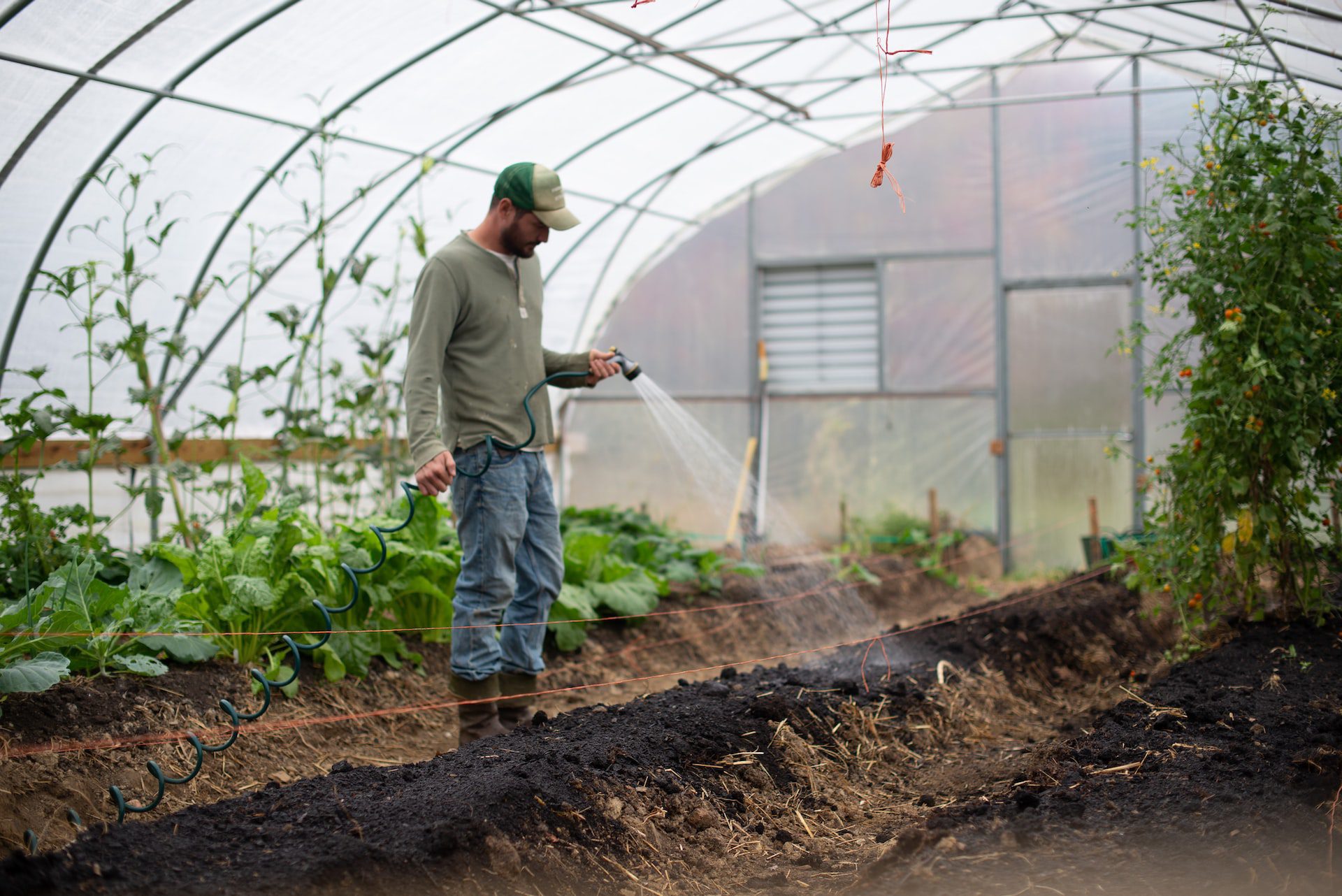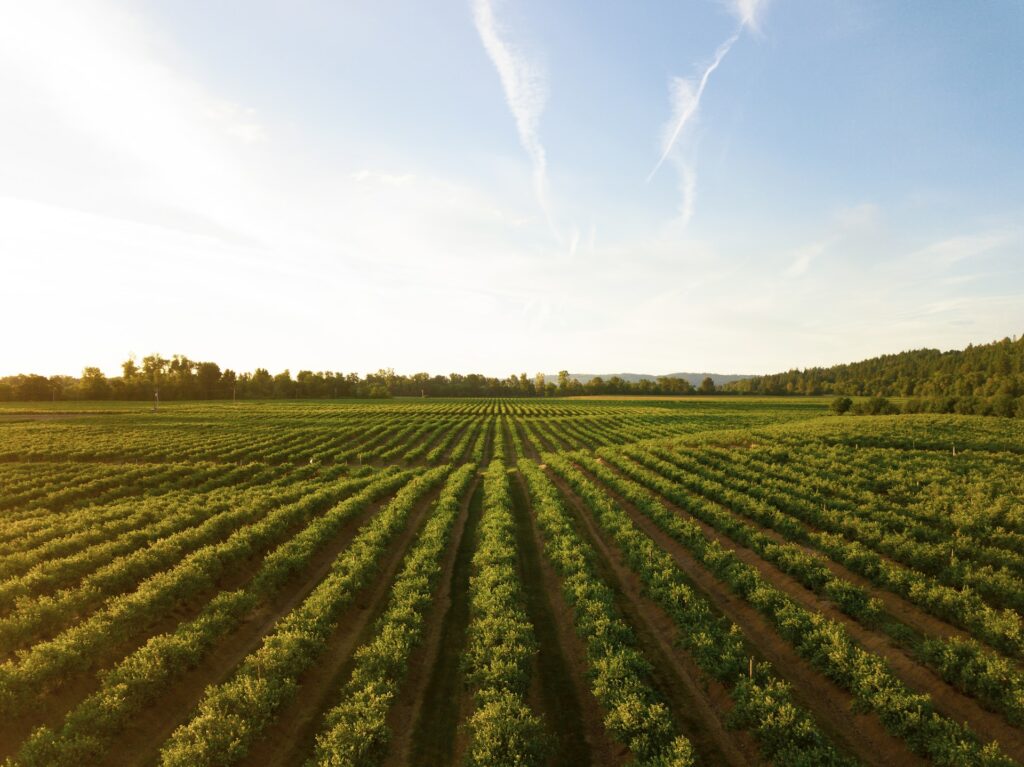04/15/2024 | Agriculture and Farming | 7 MINUTE READ
The Vital Role of Water Treatment in Agriculture and Horticulture

Whether you grow crops for food or improve your yard’s appearance, you should understand how agriculture and horticulture work. Horticulture meaning involves a branch of plant agriculture that focuses on garden crops, which include everything from fruits and vegetables to ornamental plants.
Agriculture refers to many different processes involved in raising animals and growing crops. Farming is a major aspect of agriculture that involves raising livestock and cultivating land. Agriculture has been around for millennia.
Water is among the most critical components in thriving agriculture and horticulture. Crops need the right amount of water to survive and thrive. If a farm receives enough rain during the growing season, it may be easier to maintain high crop yields.
Water treatment may also be necessary to ensure crops receive the nutrients they need to grow. If an essential nutrient is lacking, crops may display stunted growth. Water treatment also allows for agriculture reuse. In this guide, you’ll learn about the vital role that water treatment processes play in agriculture and horticulture.

Water Reuse in California Agriculture
Agricultural reuse involves recycling water and using it multiple times in a crop or livestock setting. The water must be treated before it can be safely reused, which means contaminants need to be removed. Agricultural reuse systems employ efficient treatment processes to ensure the water meets specific quality standards.
The types of water that can be treated for agricultural reuse include plant wastewater, field runoff after irrigation, and municipal wastewater. The Agricultural Reuse Committee is dedicated to advancing policy, public acceptance, and laws of recycled water. Their mission and goals include the following:
- Facilitating WRCA access to technical information and case studies involving agricultural reuse
- Providing people with a forum where they can offer input and review agricultural reuse legislation and regulations
- Reviewing the volumetric survey that the Water Board performs every year
- Conducting extensive outreach to different agricultural groups on the potential of reusing water for better supply
Benefits of Agriculture Reuse
There are many advantages associated with agricultural reuse, which include everything from local control to environmental friendliness.
Resilience: Water reuse ensures that you have a reliable and constant supply of clean water that doesn’t depend on pumping restrictions or environmental factors.
Local Control: Agricultural reuse can be performed to develop a regional water supply in arid regions that usually require imported water. This solution saves time and money.
Environmental friendliness: Reusing water can save considerable resources, reduce energy consumption, and limit pollution to more sensitive bodies of water. If you implement an agricultural reuse system, pumping long distances will no longer be necessary, so energy consumption should be lower.
Safety Regulations: State and federal governments maintain strict water quality safety regulations, ensuring public health is protected.
H2O Engineering: Specializing in Water Treatment for Agriculture
H2O Engineering is a reputable company that specializes in water treatment in agriculture. Their clients include local growers and large-scale farmers, so they develop a wide range of treatment systems that meet every need. They can also implement water treatment for agricultural canal distribution systems. They offer many effective services, which include the following:
- Remote diagnostic reporting
- Chemical supply
- Operations and maintenance contracts
- System Integration
- Equipment supply
- Free water sampling
- System design
Their main goal is to optimize and streamline the treatment of water resources so that their clients can obtain sustainable water utilization. H20 Engineering uses many technologies for water treatment in agriculture, which include the following:
- Chemical Delivery and Distribution: These systems deliver a specific amount of a chemical product to a water source using pumps and controls.
- Color Removal: When drinking water has poor aesthetics, it likely contains high levels of suspended particles and organic compounds. Filtration and oxidation can remove suspended particles and organic compounds.
- Desalination: Water with high salinity can be desalinated to deliver fresh water that can be used for irrigation.
- Disinfection: The water disinfection process ensures that pathogenic microorganisms can be removed or neutralized.
- Enhanced UV Treatment: Ultraviolet technology uses light to destroy pathogens safely and effectively. This is often the last step in water treatment.
- Filtration Pre-treatment: Filtration is commonly used to enhance downstream membrane technologies, which include reverse osmosis (RO), oxidation, nanofiltration, and ultrafiltration (UF).
- High-purity Water: The manufacturing of semiconductors and pharmaceuticals requires strict chemical tolerances, which means that high-purity water needs to be used. This water contains hardly any contaminants.
- Odor Removal: Oxidants like ozone can remove odors by eliminating particles, bacteria, and compounds that cause odd smells.
- Oxidation: This process occurs when an oxidizer is added to a source of water to remove electrons from specific contaminants.

Understanding the Importance of Water Treatment in Agriculture and Horticulture
Horticulture is an aspect of plant agriculture that deals with all types of garden crops. It covers every facet of garden management but is mainly used to describe commercial production. When considering the scale of horticulture, you can place it between field agriculture and domestic gardening. However, all types of cultivation are closely linked.
For horticultural efforts to be successful, water is required. It’s an essential nutrient for nearly every plant. Water is needed for a seed to sprout eventually. Once the plant grows, water takes nutrients, ensuring all parts remain healthy.
Water is also necessary for photosynthesis, which allows plants to gain energy from the sun and make their own food. Plants take carbon dioxide from the air and hydrogen from the water. These substances are absorbed into each plant’s roots, producing an oxygen byproduct.
Remember that water is also directly responsible for providing structural support in cells, ensuring plants remain flexible and strong. If plants don’t receive enough water, their tissues will begin to brown. You might also notice their leaves starting to curl, eventually leading to death. The factors that influence horticultural success include the following:
- Climate
- Terrain
- Soil productivity
- Nutrient availability
- Root development
- Other regional variations

Water treatment in agriculture is also crucial for horticulture success. The many water treatment solutions available make eliminating harmful chemicals and contaminants in the water supply easier. Most natural water sources contain such impurities as agricultural runoff, heavy metals, and chlorine. These contaminants can cause considerable harm to the soil and plants at high concentrations. If you implement water treatment systems in your area, you can keep your plants clean and healthy.
Along with enhancing the quality of your water, treatments like filtration and ultraviolet technology assist in reducing water waste and usage in different types of horticultural applications. If you use an efficient irrigation system that only provides plants the water they need, you can limit waste and over-watering. It would be best to save money and water, which will help protect the environment.
Remember that water treatment can also improve the health of your soil. These solutions make it easier to balance the soil’s pH level, which is necessary for ongoing plant growth and nutrient uptake.
For most crops, a pH range of 6.0-7.5 is ideal. If the pH is below 6.0, the soil is acidic, which means fewer plant nutrients will be available. Some harmful elements, including manganese and aluminum, may also reach toxic levels.
When the pH exceeds 8.0, the soil can be described as alkaline. This can also be a problem for your plant’s health. Nutrients like phosphorous become limited in alkaline soil, so your plants won’t grow properly. At the ideal pH levels, you can be confident that your plants are getting the nutrients they need to thrive.
Conclusion
Water treatment is essential to ensure crop yields remain high and plants receive the nutrients they need. From oxidation to desalination, many solutions can remove contaminants and keep plants healthy. Regardless of the types of crops you’re growing, it’s highly recommended that you implement sustainable water management practices.
In the coming years, farmers and horticulturalists will encounter new challenges in water treatment that they must overcome. For example, new contaminants emerge regularly. Some pollutants may require advanced treatment methods to be removed from the water effectively. Climate change is also causing several issues for horticultural protection, including everything from a water resource reduction to lower rain-fed yields. By anticipating these challenges, it’s possible to address them early on.
Posted by Joshua Samp on April 15, 2024
Sensorex is a global leader in the design and manufacture of quality sensors for water quality and process applications. The company offers more than 2000 sensor packages for pH, ORP, conductivity, dissolved oxygen, free chlorine, chlorine dioxide, UV transmittance and other specialty measurements, as well as a full line of sensor accessories and transmitters. Its expert technical support engineers solve analytical sensor challenges with custom designs and off the shelf products.




